Rivers hold a lot of meaning to people and cultures. In Texas, the Guadalupe River is an important river that used for all sorts of things over the years. From its native heritage to its current use as a fishing and recreation ground, this important waterway offers a lot! Today, we will look at the Guadalupe River and learn some of the most interesting facts we can about it. Let’s get ready to learn about the Guadalupe River!
The Patron Saint of Mexico
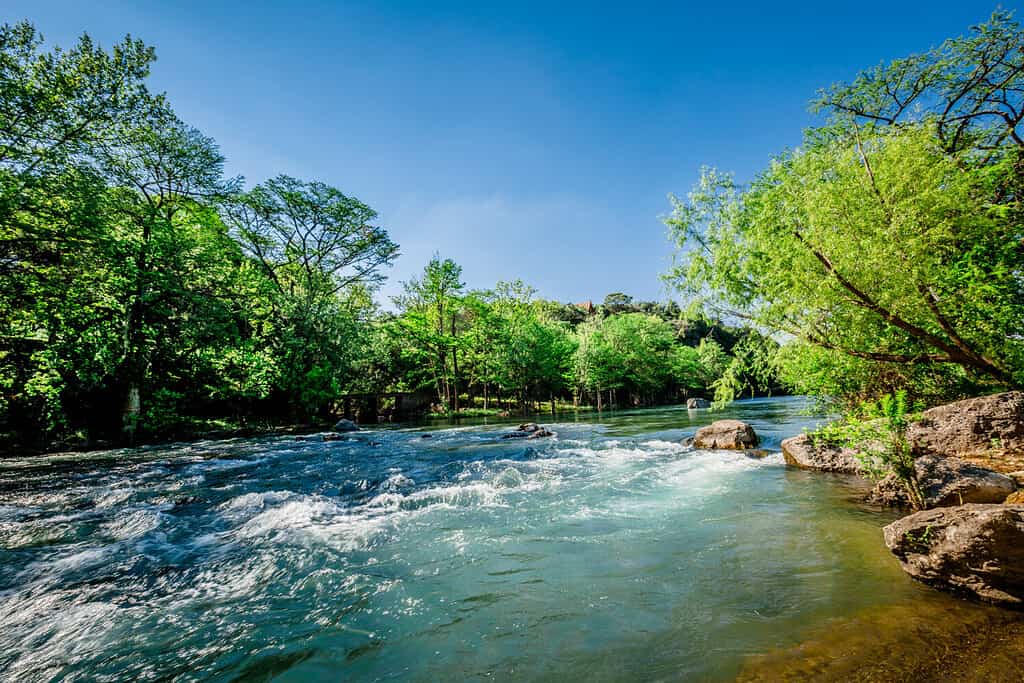
The Guadalupe River’s name comes from the patron saint of Mexico, Our Lady of Guadalupe!
©JaDipity/Shutterstock.com
The river was originally named after Our Lady of Guadalupe, who happens to be Mexico‘s patron saint. Alonso de Leon named the river in 1689 when the Spanish explored the territory before the United States owned the land. So far, the name has been around for over 300 years!
Ancient Habitation
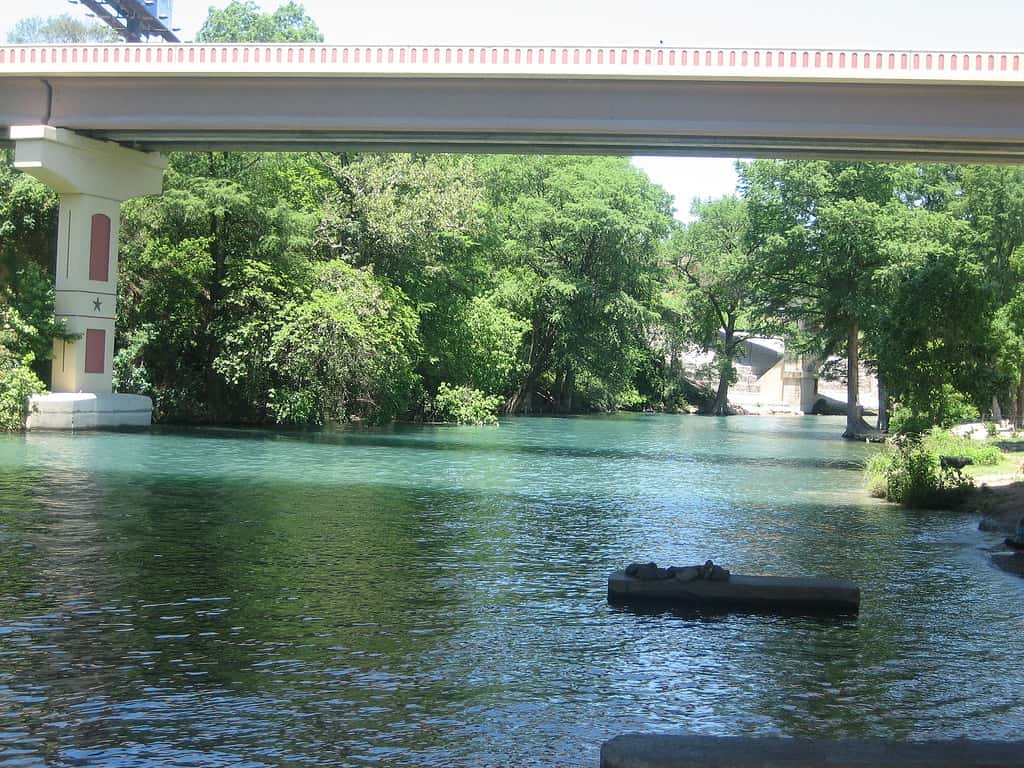
The river features a strong history that may date up to 12,000 years ago.
©Billy Hathorn at English Wikipedia, CC BY-SA 3.0 <http://creativecommons.org/licenses/by-sa/3.0/>, via Wikimedia Commons – License
Although the Guadalupe River was named by Alonso de Leon and has the same name today, it also has a history that predates Spanish settlers. In fact, humans have been living around the shores of the Guadalupe for several thousands of years. Some researchers even claim time frames of up to 12,000 years ago. Various tribes inhabited the area, including the Coahuiltecans, Tonkawas, Karankawas, Lipan Apaches, and Comanches. Even still, these tribes were only the ones that were found by explorers. When researchers look at the overall human timeline in comparison, these findings are still relatively new. The earliest record of human habitation dates back to the Archaic era via small artifacts found by archeologists.
The Flood of 1987
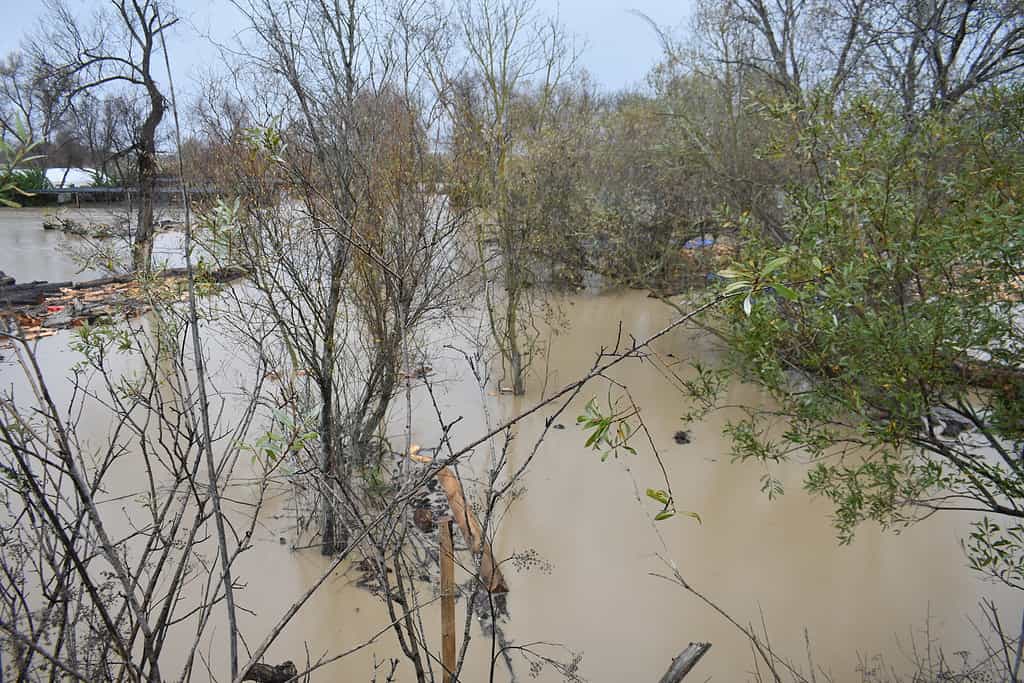
A deadly flood in 1987 killed 10 kids coming back from a church camp on a full school bus.
©Athena345T/ via Getty Images
Unfortunately, the Guadalupe River was also the site of a deadly flood that occurred in 1987, where 10 children died. The flood was caused by a series of thunderstorms that dumped 5-10 inches of rain in the upper headwaters of the river basin. As a result, it created a massive flood wave that stalled a bus as it tried to leave a church camp. As the kids tried to escape the bus, a surge came down the river and swept them away. Thirty-nine kids were swept away, and nearly a quarter of them were not able to be rescued, a devastating loss for the area.
230 Miles From End to End
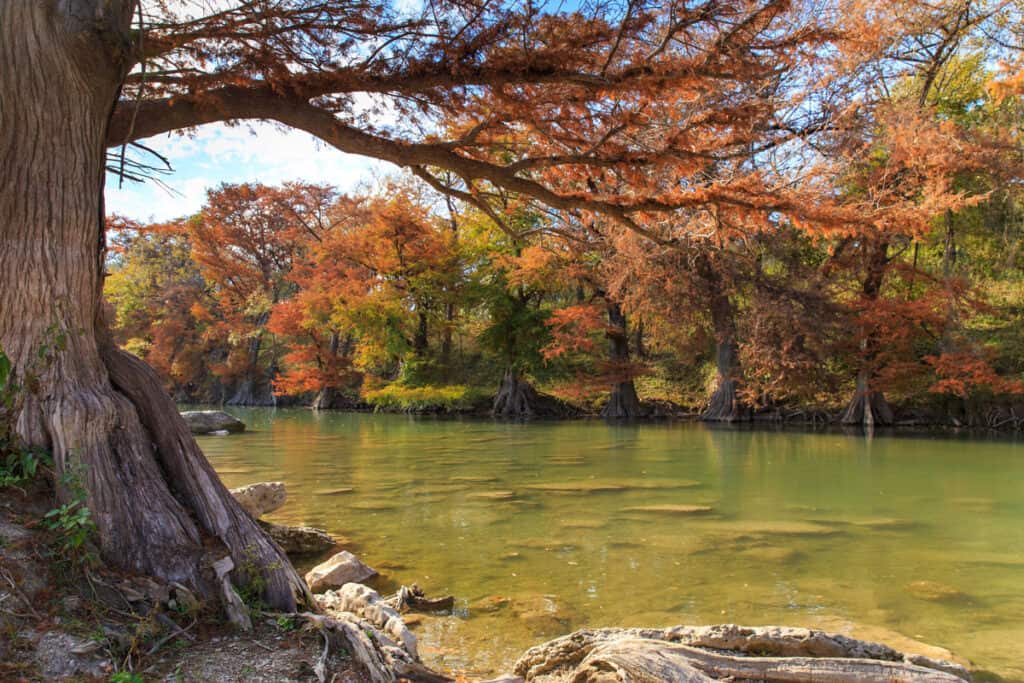
The Guadalupe measures 230 miles long.
©iStock.com/TriciaDaniel
The upper part of the Guadalupe River begins in a region known as the “Texas Hill Country,” where it is smaller and faster, more like a stream. Two forks known as the North Fork and South Fork Guadalupe Rivers form it before heading southeast towards the coast. The lower river regions begin at the outlet of Canyon Lake, and the region between the Canyon Dam and the city of New Braunfels is extremely popular for rafting, kayaking, and other boating activities. Near Tivoli, it meets the San Antonio River, and then it forms a large delta region, eventually ending up in the San Antonio Bay Estuary at Guadalupe Bay. From end to end, the river is listed with a length of 230 miles.
Boating, Tubing, and Fishing
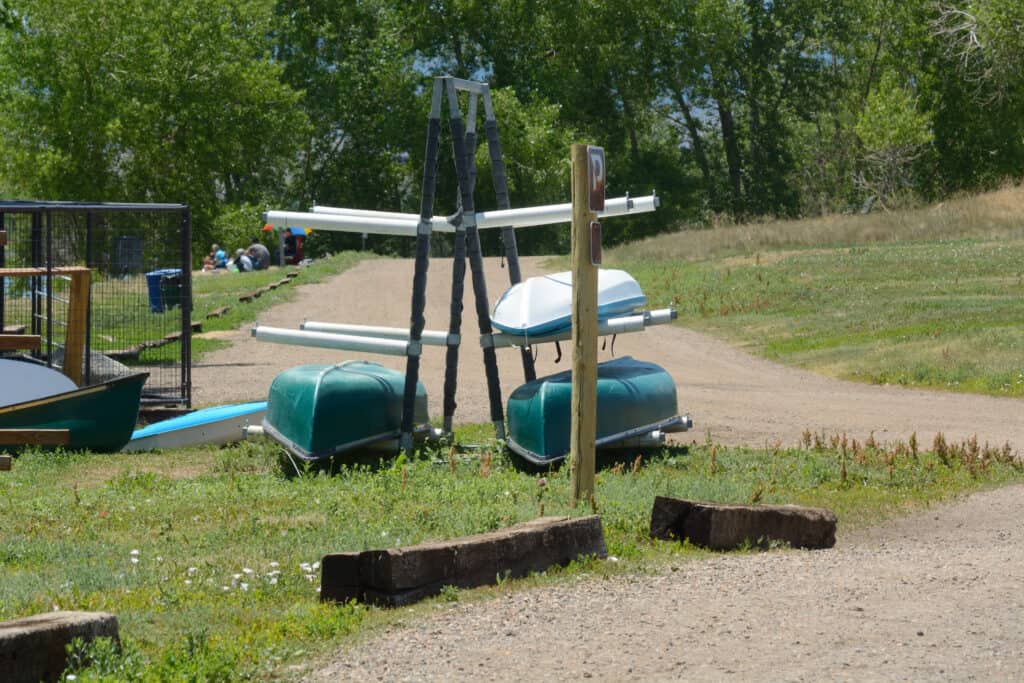
Kayaking, boating, and whitewater rafting are popular activities on the Guadalupe River.
©Merrimon Crawford/Shutterstock.com
By and away, the most common use of the Guadalupe River is for recreation and a bit of fun. There are a ton of opportunities for whitewater rafting and kayaking, with some rapids open for most skill levels. The most popular region for non-motorized boating is between Canyon Dam and New Braunfels, although many other parts of the river are used. Recreational fishing is also extremely popular within the area. The centralized location of the river (between San Antonio and Austin) helps to keep it a popular destination for most of the year.
A Whole Lot of Native Wildlife

The Guadalupe bass is a fish native to the Guadalupe River.
©Clinton & Charles Robertson from Del Rio, Texas & San Marcos, TX, USA / CC BY 2.0 – License
Rivers are always hotspots for life, and the Guadalupe is no different. In fact, the dry and arid nature of much of Texas means that plants and animals especially rely on these rivers to survive. The river has over 100 species of fish. Some of the most common fish in the Guadalupe include rainbow and brown trout, largemouth and smallmouth bass, catfish, and sunfish. The area includes plenty of birds, such as herons, egrets, kingfishers, hawks, and bald eagles. Mammals, reptiles, and amphibians like deer, turtles, and frogs live along the shores. Overall, rivers like the Guadalupe support thousands of species, many of which only live in the area (like the Guadalupe bass!).
The Texas Water Safari
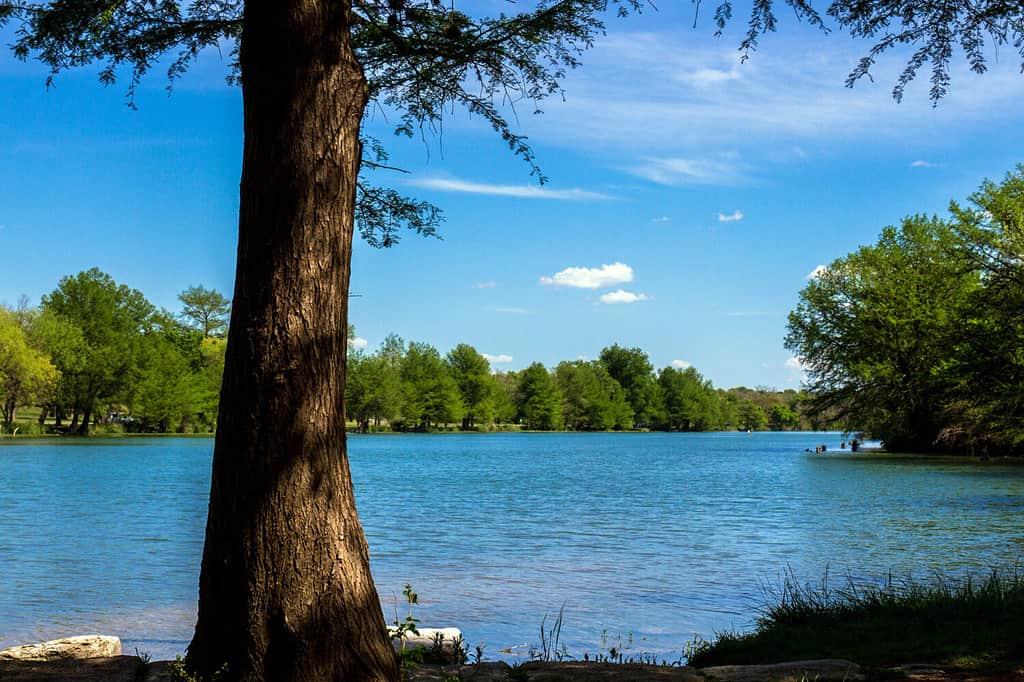
Since 1963, people have attempted the 260-mile canoe course, the Texas Water Safari.
©Martha Marks/Shutterstock.com
The Guadalupe River is part of a 260-mile canoe course named the Texas Water Safari! Each June, the race starts in San Marcos and ends in Seadrift. Often called the “World’s Toughest Canoe Race,” it requires racers to take everything they need with them. They must also complete the race in 100 hours. Participants can only receive water, ice, and food from their team captains, who follow the racers along the way. The race was first held in 1963 and continues to be held to this day (despite some COVID-19 setbacks).
Dam-Controlled Flow

Canyon Lake resulted from a dam and is part of the Guadalupe River Basin.
©Dana Rasmussen/Shutterstock.com
Nowadays, the Guadalupe isn’t naturally running in the way that we normally think of for a river. The entire system has several dams and reservoirs built for certain things, whether it’s flood control, drinking water, or power generation. In fact, Canyon Lake was created as a result of a dam and has become an essential part of Texan infrastructure (and recreation) to this day! That being said, dams are potentially causing some environmental issues, namely restricting fish populations from migrating along historic routes, although this is more prevalent in areas with salmon.
Quiet Camping

Campers love the Guadalupe River because of its quiet and serene surroundings.
©Prapat Aowsakorn/Shutterstock.com
The Guadalupe is a popular spot for camping but for a very specific reason! There are lots of sand bars located along the river’s shores, and the soft sand has a dampening effect on the water as it rushes past. Instead of sounding like an extremely loud river rushing over rocks (which is pretty standard), the sand dulls the noises, creating a more “hushed” river. For campers, this quieter setting can be less overwhelming, and it is a draw for people looking for some outdoor time!
A Mission for Missions
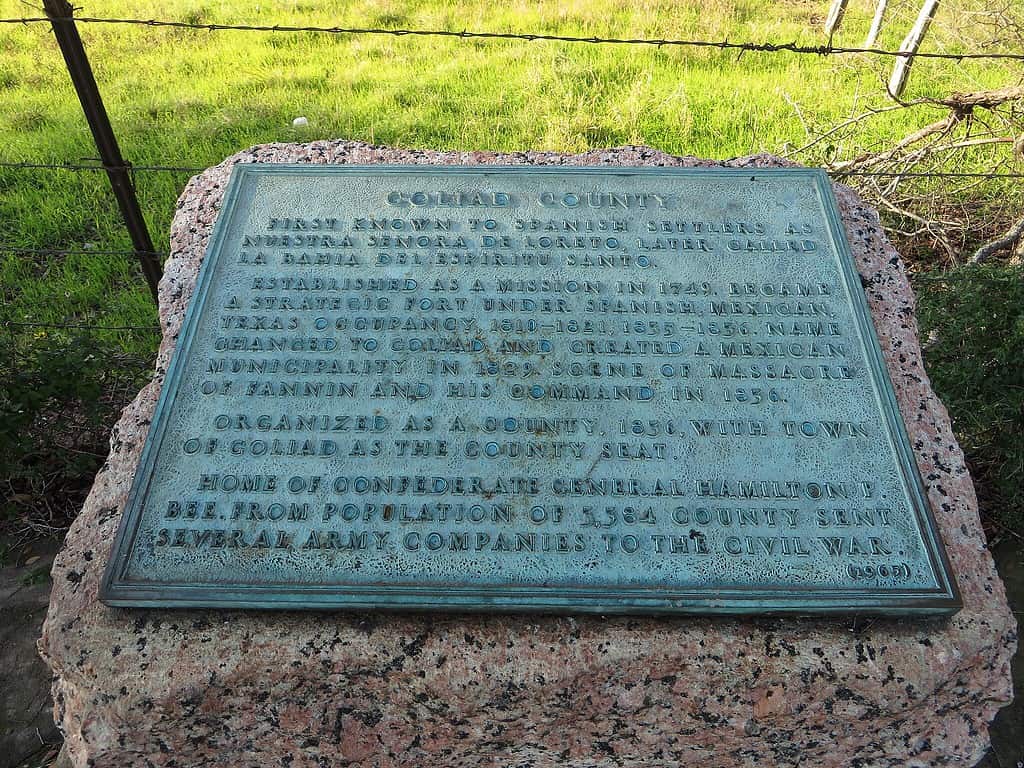
Missions such as the Mission Nuestra Señora del Espíritu Santo de Zúñiga sprung up around the Guadalupe River.
©Ken Lund from Reno, Nevada / CC BY-SA 2.0 – License
The first time that colonial powers began settling along the river (displacing many native people groups in the process), it was done through “missions”. These missions didn’t mean what missions meant today, as in “doing a mission.” Missions were actual buildings used for religious purposes. The missions were a hub for heading into the wilderness of the area and converting native peoples to Christianity. Some of the first missions were established in the 1720s in the region of modern-day Victoria. Over the next 100 years, many of the missions wouldn’t last. The buildings either fell into disarray or were raided continuously by native groups. Soon after the missions’ destruction and abandonment, longer, more permanent establishments began to crop up. This soon set the stage for the long-term settlement of the area and further displacement of natives.
The photo featured at the top of this post is © iStock.com/TriciaDaniel
Thank you for reading! Have some feedback for us? Contact the AZ Animals editorial team.






